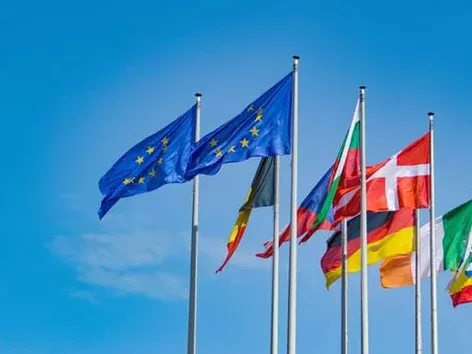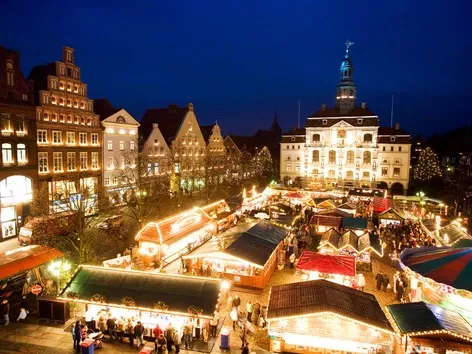The cost of living in Europe: in which EU countries is it most profitable to live?
- Price indices for goods in European countries
- The cheapest countries in Europe to live in
- The cheapest countries in terms of food and soft drinks
- Cost of clothing: where in Europe is the cheapest to buy
- Prices for alcohol and tobacco products
- Cost of restaurants and hotels in Europe
- Cost of living in European countries
- Bottom line: where in Europe is the cheapest to live

The choice of a country to live in Europe is determined not only by its climate and career opportunities, but also by the overall cost of living. Each country offers its own unique conditions, and the cost of living in Europe can vary significantly from region to region. Find out about the current cost of living in Europe in 2024/25
When planning to move to Europe, it is important to estimate the cost of living in different countries in advance, as prices for housing, food, transportation, and other basic expenses can vary significantly. Let's compare the average monthly expenses in different European countries to help you assess where you can find the best balance between quality of life and financial costs.
Price indices for goods in European countries
According to Eurostat reports, the average price index for consumer goods, i.e. the cost of consumer goods and services, leaves a significant imprint on the overall cost of living. The indices show how much prices in certain categories have increased or decreased compared to the EU average. For example, the cost of living in Ireland and Denmark in 2024 is 146% and 145% of the EU average, making these countries among the most expensive to live in.
Readmore about the cost of living in Denmark in the previous article
The cheapest countries in Europe to live in
Romania (58% of the EU average), Bulgaria (59%), and Poland (62%) top the ranking of the most affordable countries to live in in 2024. These countries have the lowest prices for food, clothing, housing, and transportation. For example, Poland offers affordable housing and low food prices, making it particularly attractive to those looking for a cost-effective way to live in Europe.
Hungary is also among the cheapest countries in Europe. In particular, its capital city of Budapest is one of the most attractive places for budget accommodation in Central Europe, given that Budapest is a metropolitan city. Hungary has a cost of living estimated at 64% of the EU average.
Lithuania and Latvia offer low living costs combined with attractive living conditions. Prices in these countries remain significantly lower than in Western Europe.
Read more about how much Ukrainians spend in Europe here
The cheapest countries in terms of food and soft drinks
Food prices also vary significantly between EU countries. According to the study, Romania, Bulgaria, and Poland remain the countries with the most affordable food and beverage prices. According to Eurostat, food prices in Romania are about 72% of the EU average, making it one of the most favorable countries to buy food in. Bulgaria and Poland also maintain competitive prices, especially for staple foods such as bread, meat, and dairy products.
✔️ Bread and cereals: The cost of these products is significantly lower in Poland and Bulgaria, where local production ensures affordable prices. The average price for a loaf in Poland is about 1 euro, while in Western Europe this figure can reach 1.5-2 euros.
✔️ Dairy products: In Poland and Romania, milk and dairy products are 20-30% cheaper than in Germany or France. For example, a liter of milk in Poland costs about 0.7 euros, while in France it costs more than 1 euro.
✔️ Soft drinks: In Bulgaria, prices for soft drinks, particularly water and juices, remain low due to local production. A 1.5 liter bottle of mineral water costs about 0.5 euros on average.
Earlier, we wrote that as part of the fight against fraud, Poland is simplifying the process of registering in the Ująd for foreigners.
Central Europe: a balance between affordability and quality
In Central European countries, such as Hungary, Slovakia and the Czech Republic, food prices are slightly higher than in Eastern Europe, but still much more affordable than in Western Europe. This makes Central Europe favorable for frugal living, provided the cost of groceries is moderate.
✔️ Fruits and vegetables: Hungary is one of the major suppliers of seasonal fruits and vegetables, which helps to keep prices low. Seasonal fruits, such as apples and grapes, can be purchased for around €1-1.2 per kilogram.
✔️ Meat and fish: Meat products such as pork and chicken are available in the Czech Republic and Hungary, where prices are lower than the European average. The average price of chicken is about 3-4 euros per kilogram.
✔️ Soft drinks: Central Europe has seen an increase in the production of local juices and beverages. In the Czech Republic, a 1.5-liter bottle of mineral water costs about 0.6-0.7 euros.
Don't want to miss important updates and useful articles? Subscribe to our weekly newsletter!
Western Europe: the highest prices for food and beverages
Western Europe traditionally has the highest prices for food and beverages. Particularly high prices are observed in Denmark,
Ireland and Norway (although Norway is not a member of the EU, its prices should be noted as indicative for comparison).
✔️ Meat: In Ireland and Denmark, meat costs 30-40% more than in Eastern Europe. The average price of pork is about 7-8 euros per kilogram. This is due to both high taxes and high production costs.
✔️ Bread and dairy products: In countries such as Switzerland and Denmark, bread prices are as high as €2 per loaf, and a liter of milk can cost up to €1.5. These countries also have expensive dairy products such as cheese and yogurt, which are often twice the EU average.
✔️ Soft drinks: Water and juices are also expensive in Ireland and Finland, with a 1.5 liter bottle of mineral water costing around €1.
Earlier we wrote about the cost of living in Norway and Germany
Southern Europe: variety and reasonable prices
Italy, Spain and Greece offer an interesting situation with food prices. Here, food is often moderately priced, especially seasonal vegetables and fruits, due to the large amount of local production.
✔️ Vegetables and fruits: Southern countries have favorable conditions for growing vegetables and fruits, so prices remain consistently low. For example, in Greece or Spain, a kilogram of tomatoes costs about 1 euro.
✔️ Seafood: Seafood in coastal regions is more affordable than in Central Europe. For example, in Spain, fresh fish products can be purchased for around 6-7 euros per kilogram, which is cheaper than in the Nordic countries.
✔️ Bread and soft drinks: Bread prices in Southern Europe range from 1-1.5 euros per loaf, and a bottle of mineral water costs about 0.6 euros. These countries also have a wide range of natural fruit juices at affordable prices.
Cost of clothing: where in Europe is the cheapest to buy
Bulgaria and Hungary are the leaders among the countries with the cheapest clothing in Europe (80% and 83% of the average, respectively). Meanwhile, the Czech Republic, Sweden and Denmark have the highest prices for clothing, which can reach 134% of the average. Tourists looking for the best shopping in Europe at low prices choose Bulgaria and Romania, which offer a wide range of clothing at affordable prices.
Please note! Eastern Europe remains one of the most budget-friendly regions for buying clothes, especially for basic items and mass-market brands.
Prices for alcohol and tobacco products
There is a significant difference in the cost of alcohol and tobacco. Ireland remains the most expensive country in terms of prices for these products (216% of the average), while Bulgaria (66%) and Poland (73%) offer the most affordable prices for these products. This large difference can be explained by the different taxation rates on alcohol and tobacco products, which is an important factor when choosing a country for permanent residence or travel for those who buy tobacco and alcohol.
In Central European countries, such as the Czech Republic, Slovakia and Slovenia, alcohol and tobacco prices are higher than in Eastern Europe, but still affordable for the average European consumer. For example, a pack of cigarettes in these countries costs an average of 5.2 euros, a bottle of beer costs 0.7 euros, and spirits start at 6-7 euros per bottle.
Interesting! Southern Europe, especially Italy, Spain, and Portugal, is famous for its wine-making traditions and developed alcohol industry. Thanks to local production, wine prices are among the lowest in the world, but tobacco prices remain higher due to excise taxes.
Western Europe, including France, Germany, Ireland, and Sweden, is known for the highest prices of alcohol and tobacco, especially due to high taxes and high standards of regulation.
Cost of restaurants and hotels in Europe
Prices for restaurants and hotels can also vary considerably. According to the latest data, the most expensive hotels and restaurants are concentrated in Luxembourg, Finland, and Denmark, where prices reach 156% of the EU average. The cheapest countries in this category are again Hungary and Bulgaria (51% of the average), which makes them ideal for budget vacations.
Cost of living in European countries
When choosing a country to live in, it is important to consider the cost of various categories of expenses, including food, housing, clothing, transportation, and utilities. For example, the overall cost of living in Poland and Bulgaria is significantly lower than in Western Europe, making these countries popular among those looking for a cheaper life in Europe. While countries such as Ireland, Denmark and Luxembourg remain among the most expensive.
Bottom line: where in Europe is the cheapest to live
Taking into account the current indicators, we can say that for those who want to save money, the best countries to live in in 2024-2025 are Bulgaria, Romania and Poland. These countries offer low prices for housing, food, clothing, and other consumer goods. Those who are willing to pay more for living in economically developed countries with higher incomes choose Ireland, Denmark or Luxembourg. We hope that this review will help you find the best place to live or travel in Europe.
Eastern Europe
Eastern European countries such as Poland, Bulgaria, and Romania offer relatively low costs for basic categories of goods and services, making them attractive to students, digital nomads, and those looking for a low-cost place to live.
Poland: 900-1,200 euros per month.
Bulgaria: 700-1,000 euros per month.
Romania: 750-1,000 euros per month.
Central Europe
In Central Europe, the cost of living remains moderate, although slightly higher than in Eastern Europe. The Czech Republic, Hungary and Slovakia offer comfortable living conditions and reasonable prices for those looking for a balance between quality of life and costs.
Czech Republic: 1,200-1,600 euros per month.
Slovakia: 1,000-1,300 euros per month.
Hungary: 1,100-1,500 euros per month.
Western Europe
Western Europe traditionally remains one of the most expensive regions to live in. Ireland, Denmark, and Luxembourg require high incomes to ensure a comfortable standard of living, and housing and food costs are among the highest in the EU.
Ireland: over 2,500 euros per month.
Denmark: over 2,700 euros per month.
Luxembourg: over 3,000 euros per month.
Southern Europe
Southern Europe remains affordable, especially for those who want to enjoy the Mediterranean climate for a reasonable price. Spain, Portugal, and Greece offer lower prices for rental housing and groceries compared to Western Europe.
Spain: 1,500-1,800 euros per month.
Portugal: 1,300-1,700 euros per month.
Greece: 1,000-1,500 euros per month.
If you have chosen a European country to move to or are already in one of the European countries, remember that the legislative nuances of a particular country can both help you to quickly legalize and become an obstacle to a comfortable life in Europe. You can get professional and affordable legal advice on migration and visa issues directly on the Visit Ukraine portal, at a time convenient for you.
Just a reminder. There are a number of countries in Europe that are considered to be the best for employment of Ukrainians.
Want to know more? Read the latest news and useful materials about Ukraine and the world in the News section.
Our recommendation for a safe and comfortable trip:
Visit Ukraine Insurance - insurance for a safe stay abroad without unnecessary expenses;
Green Card - compulsory car insurance for traveling abroad;
Visit Ukraine Tickets - book tickets for buses, trains, and airplanes to/from Ukraine and between cities around the world;
Private Lawyer service - professional legal support on visa and migration issues;
Visit Ukraine Merch - buy patriotic clothing and accessories with worldwide delivery.
© 2018-2024, Visit Ukraine. Use, copying or reprinting of materials on this site is permitted only with a link (hyperlink for online publications) to Visit Ukraine.
All rights reserved.
Recommended articles
1 min
Events
New Year 2025: will there be a Christmas tree and festive events in Kyiv?
Kyiv already knows how the city will celebrate the New Year. As for the installation of the Main Christmas Tree, this issue has not yet been resolved. We'll tell you whether to expect New Year's celebrations in the capital and in what format they may take place
09 Nov. 2024
More details1 min
Finance
Czech Republic to undergo pension reform: what does it mean for Ukrainian refugees?
Pension reform in the Czech Republic has already begun, but the changes will be implemented over several years. Find out what the key features will be in this country and how they will affect foreigners, including Ukrainians
10 Nov. 2024
More details2 min
Travel
Where to celebrate New Year's Eve 2025? A selection of the best locations in Western Ukraine
Celebrating the New Year in Western Ukraine is an invitation to the world of tourist charm! Snow-capped Carpathians, medieval castles, bright city squares - every meter of this region is preparing to celebrate the New Year, and you can't help but feel it. Find out where in Western Ukraine to celebrate the new year 2025 in an atmospheric way
11 Nov. 2024
More details1 min
Entry rules
The Netherlands is tightening border controls: what travelers should know
Due to the increase in illegal migration to the EU, the Netherlands is tightening border controls starting in December this year. Learn about the new border crossing rules, the duration of the restrictions and their impact on travelers
12 Nov. 2024
More details

